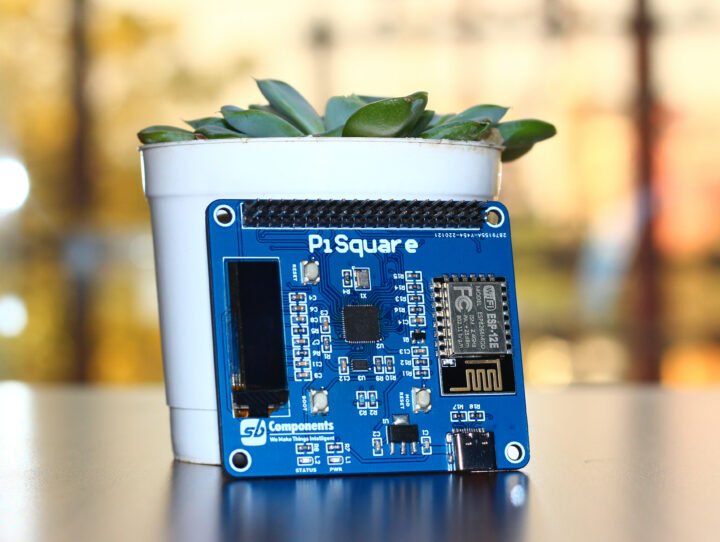SB Components PiSquare is a board following the Raspberry Pi HAT form factor, and based on Raspberry Pi RP2040 microcontroller & ESP-12E Wireless module in order to control multiple Raspberry Pi HATs wirelessly without stacking them on their Raspberry Pi.
The PiSquare uses Socket programming to control multiple Raspberry Pi HATs wirelessly, and for instance, you could connect multiple HATs with SPI or UART without the expansion boards conflicting with each other since the physical interface is handled by the Raspberry Pi RP2040 on each PiSquare connected over WiFi (ESP8266) to the Raspberry Pi SBC.
PiSquare hardware specifications:
- MCU – Raspberry Pi RP2040 dual-core Cortex-M0+ microcontroller @ up to 133 MHz
- Storage – 16Mbit SPI flash
- Display – 0.91-inch OLED display
- Connectivity – 802.11b/g/n WiFi 4 via ESP-12 (ESP8266) module
- USB – 1x USB Type-C port
- 40-pin header and form factor compatible with the official Raspberry Pi HATs
- Power Supply – 5V via USB Type-C port
- Dimensions – 85 x 54 mm (Raspberry Pi HAT form factor)
The solution basically allows you to connect as many Raspberry Pi HATs as you’d like to a single Raspberry Pi SBC with the limit being the number of WiFi clients that can be handled by your router. The “project page” on Hackster.io sadly lacks information about the software and we are only told that the PiSquare can be controlled through a smartphone and socket programming.
SB Components PiSquare is available for 9 GBP (almost $12) on Kickstarter, and the retail price will be 14 GBP or around $18.4 US. Shipping is scheduled for June 2022 and adds 5 GBP to the UK, about $13 to the US, and close to $20 to the rest of the world.

Jean-Luc started CNX Software in 2010 as a part-time endeavor, before quitting his job as a software engineering manager, and starting to write daily news, and reviews full time later in 2011.
Support CNX Software! Donate via cryptocurrencies, become a Patron on Patreon, or purchase goods on Amazon or Aliexpress






